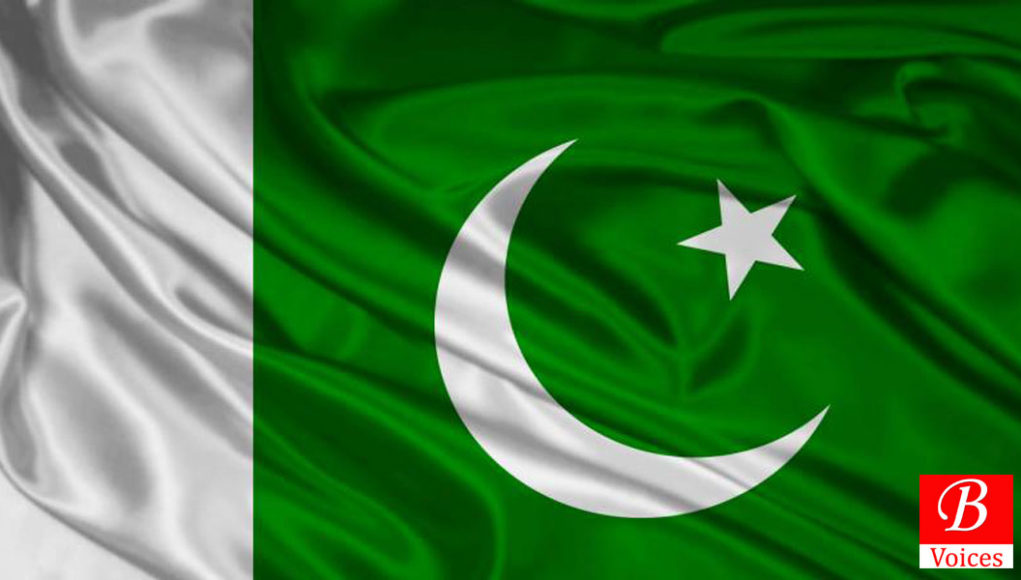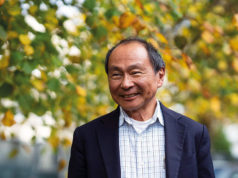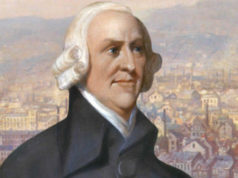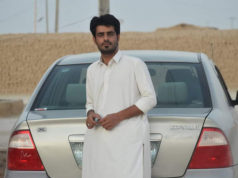Tahira Khan
Less has been written and spoken in accordance with the analytical discourse of dismemberment which didn’t only confused the concept of Pakistani nationalism but also questioned the two-nation theory. The conundrum was first elaborated briefly by Ronaq Jahan, a political scientist and faculty member at Columbia University since 1990, in her book titled, ‘Pakistan: The failure of national integration.” According to her argumentation, the whole puzzle revolves around the struggle for political power where the respective governments of every tenure always supported elitist authoritarianism with meagre representation for Bengali counter-parts. There remained imbalance between state-building with respect to nation building which first finalized the Bengali’s voice for autonomy and then independence, ultimately.
Nationalism is entirely subjective in the context but it fails to prevail in any state when the inter-subjectivity of the term is questioned. Though, the literature of political science differentiates between nation and nationalism but one thing is essential to their survival i.e., “molding of ethnic diversity into a unified polity.” Rupert Emerson is right in pointing out that many states of Asia and Africa are not yet nations but nations in hope. Unfortunately, the creation of Pakistan has also witnessed the same sort of paradox i.e., before inception a state was required but, after getting territorial boundaries there came a need for the nation.
Before the incorporation of 1956 constitution, state machinery was governed by Government of India 1935 Act. The act was having mode of centralization which, surprisingly, favored Quaid’s Vicergal model of governance. Generally, newly crafted states opt strong center policies where state building is largely focused at the expense of nation building. Thus, the overall narrative seems detrimental to the phenomenon of national integration which ask for incorporation of every community in the single but distinct national political system.
Same is the case with disintegration of Pakistan when state building overruled the need of unified community under the cover of political and economic development. This resulted in the creation of Bangladesh in December 16, 1971. Ronaq Jahan briefly explains the overall scenario where concentration of authority meant lethal to the national cohesion and, analyzes the deep political manipulation and constitutional flaws which deprived the eastern wing from its very will to speak and make demands for the respective rights. Variance in the distribution of power between the two wings largely contributed to the absence of committed political leadership which, then, undergone maneuvering from the western side at the expense of eastern side.
By dissecting the anatomy of both wings, Ronaq Jahan finds severe contrast because of the various differences existing in geography, demography, language, culture, history, traditions and religion. Firstly, both wings were separated from each other by over one thousand miles. The location of west wing is favoured towards middle east whereas eastern one is in geographical continuity with south-eastern Asia. Secondly, the population structure also varies considerably. Western part carries heterogeneous population comprising of Pashtun, Baloch, Punjabi, Seraiki and Sindhi. As far as the opposite wing is considered, the homogenous population was residing with few minority divisions. Thirdly, the culture of western wing is more diversified as compared to the other wing. Tribalism, feudal landlordism and caste like stratification was more prevalent in the western side whereas eastern community entertained liberation from any such classification. Here, the language factor also plays its role. Bengali played a prominent role on one side whereas the other side of the story is surely involved in complexity. On behalf of the political elites, they failed in developing any second popular language understandable to the people of both sides. Fourthly, the traditions of west wing have titled the populace as martial races along with being conquerors drawing legacy from different eras of Turks, Afghans and Mughals respectively. In contrary, eastern wing never entertained the central domination in any period of history, either Mughal or the British one. Lastly, there comes a religious factor. Definitely, as per the standards of Two-Nation theory, both wings constitute Muslim majority but the problem prevails when it comes to Hindu community. Western wing was having approximately 2% of Hindus while eastern side accommodated 20%.
The inherent disparities contributed to the failure of state policies of one language, one government, and one statesman along with strong but one political system. There comes a focus on outward functions by ignoring the input ones where the oppressed community constituted almost 52% of population. This unevenness of various factors led to the narrow popular support of power elite. At first, it caused legitimacy crisis but then penetration and participation crisis also emerged on the surface. Ultimately, we see a political class within the eastern wing which didn’t only engaged the local populace but shook the entire political system as well. The very first cornerstone was laid down by the foundation of Awami National League in 1949. Then there comes anti-BPC (Basic Principles Committee) Movement (1950), language movement, mobilization of students and the 1954 elections. Clearly, every event could be viewed as detrimental to notion of national integration but it is subjected to the change of culture and political participation also. At first stage, eastern wing indicted parochial culture but with the passage of time a subject culture could easily be pointed out where few sections even demonstrated the participatory nature. Thus, the diversification bowed seeds of dismemberment on one side but caused political socialization on the other hand- unfateful dichotomy, regrettably.
Ronaq Jahan further elaborates the era of Ayub Khan (1958-69) whose sole commitment was supposed to lessen the grievances of East Pakistan. Within ten days of imposition of martial law, Ayub Khan visited Eastern wing in order to ensure public regarding their security and preservation of rights which were made exploited by the previous corrupt politicos. In accordance with the made promises, economic development was assumed to be the foremost priority. In this regard, few institutions were established including National Finance Commission (NFC) and Pakistan Industrial Development Commission (PIDC) in 1961 and 1962 respectively. Moreover, the 1962 constitution was also promulgated whose article 145(4) was asking for removing economic disparities between the two wings.
The overall economic policies and constitutional provisions were aimed to bring national unification but, sadly, it fell short of East Pakistan expectations. The consequences first prevailed chaos in form of Six Points of Shiekh Mujeeb-ur-Rehman and, later on, emerged the Two Economy thesis which encouraged the radical voices of the region.
The next key step taken in this regard was institutionalization of bureaucracy for socio-economic change. The change dimension of job was unfamiliar for bureaucrats of both wings but several measures were taken to pronounce comprehensive reforms. Due to increased domain of affairs, the institution became home of regional politics whose causes were the very old ones i.e., the administrative autonomy and adequate representation for East Pakistan. At that time, there were three central policy making institutions i.e., commission of inquiry, the central secretariat and the public corporations. But, sadly, the Bengali percentage came out to be just 27% which depicted that out of every 280 members only 75 would be Bengalis. The new role and policies for bureaucracy were meant to bring national unity which was somehow a shrewd policy but, it failed bitterly because of meagre accommodation of Bengali vernacular class. The whole initiative was administrative setup which ignored the deeply imbedded political factors.
Now comes the case of Basic Democracies. This local body framework was crafted to mobilize people at large scale, especially at the rural set-up. The purpose was to have a limited, guided and controlled democracy. Though, the whole mechanism was again a step towards national consolidation but its drawbacks altered the scenario of consequential results. First, the nominated members outnumbered the elected ones and, these nominated members were not only governmental officials but also supported pro-center policies at every phase. Second, the socialization was purely done on economic terms whereas the political arena was left barren. Thus, the structure again exacerbated political and economic inequality instead of fulfilling the original purpose of its minimization.
Last but not the least, there comes the 1962 constitution which is again one of Ayub’s brainchild. The presidential system was adopted whose centralization mode was made more authoritarian than the French political system.
One of the regime commendable initiative was its commitment towards political institution building and, for this, we encountered Basic Democracies, reformed bureaucratic set-up, the 1962 constitution and economic policies. Keeping in view the historical context, overall set-up was formulized to legitimize Ayub’s regime but basic loopholes in structure and functions aggravated the conditions of both wings. First, the protest was observed in Karachi and Dhaka regions opposed of the celebrations being upheld for completing the decade of development (1958-68). Second, the Agar Talah Conspiracy case and arrest of Mujeeb-ur-Rehman elaborated that separatist tendencies have reached its peak level. Third, the rise of Zulfiqar Ali Bhutto among the local and poor masses demonstrated regime’s ultimate failure in every structured reform. In the wake of these events, Ayub resigned on 25th March 1969 and Yahya became the new Chief Martial law Administrator (CMLA) in order to impose second martial law in the country- a last nail in the coffin, indeed.
At the time of 1970’s general elections, regionalism was mature enough and was awaiting the structure to be opened and made its way to prevail in the existing political system. Yahya regime, again, was expecting to have a hung parliament but this time they’re mistaken. On 24th March, Dhaka conference was called upon to resolve the deadlock but talks failed. In the end, what we see is military operation and then the birth of Bangladesh, subsequently. Long and short of the story is that, neither a conference/meeting nor few empty slogans can bring national integration which was previously hampered over a very long period of time especially where state-building contains deep-rooted political factors and power struggle. This dismemberment didn’t come as a surprise to the people of Pakistan and this is what Ronaq Jahan described in the epilogue of her book.
The author is a team member of Balochistan Voices and a Student of BS (Hons) Political Science in University of the Punjab, Lahore. She hails from Loralai District. Click here to read previous articles written by the author.
Plagiarism Note: Did u find any plagiarism in any article of Balochistan Voices? Please report it to the editor by sending an email at [email protected]
Disclaimer: Views expressed in this article are those of the author and Balochistan Voices not necessarily agrees with them.
Share your comments!








